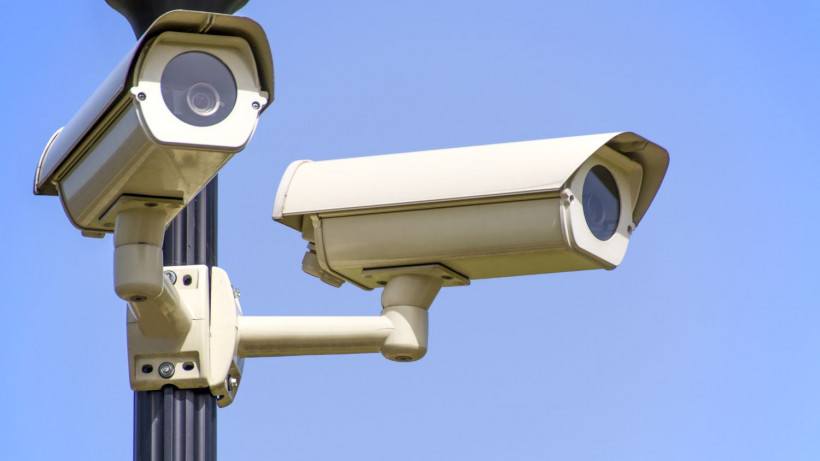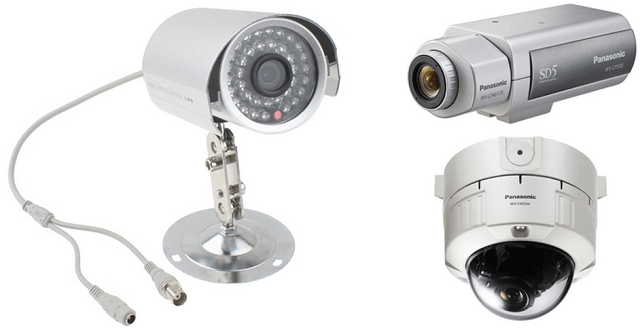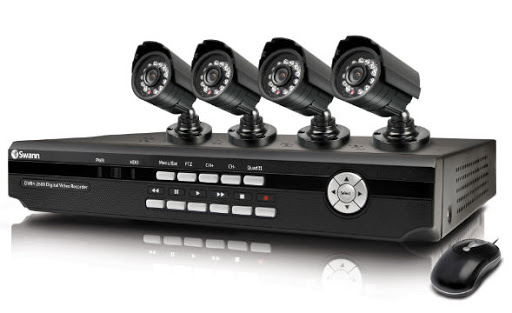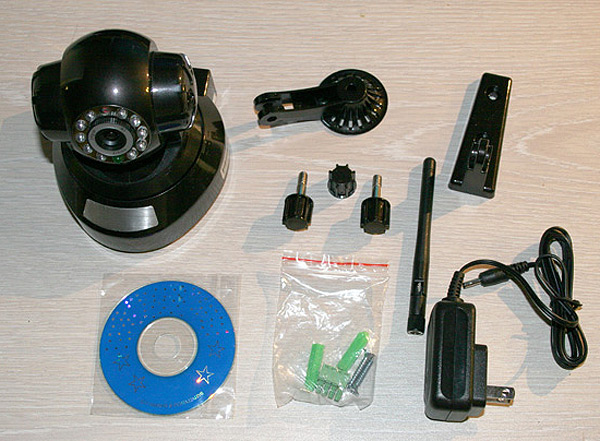Motion detectors are used in security and private automation systems. The presence sensor belongs to a more sensitive group of devices; it detects small movements in the controlled area. The node signals a change in the situation, generates a command to automatically start a response to the movement of objects.
- The principle of operation of the presence detector
- Features and characteristics of the device
- Varieties of presence sensors
- To turn on the light
- IR sensors
- Sensors for the presence of a person in the room
- Areas of use
- Difference from motion sensor
- Presence sensor selection rules
- Presence detector installation
- DIY making
- Scheme
The principle of operation of the presence detector
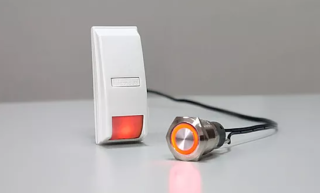
The device monitors the degree of infrared radiation in the field of view. The level is averaged and perceived as a monotonous plan. The background temperature rises when a person is present, the pyroelectric detector generates a voltage to generate a signal.
It is based on an optical scheme based on the Fresnel lens principle, sometimes a set of segment-type concave mirrors is used. The sites focus the heat rays on the pulse-producing element. As the object moves, the infrared rays catch several segments and give out bursts. The presence sensor generates a final detection signal after accumulating 2 - 4 pulses, the number depends on the sensitivity of the device.
Features and characteristics of the device
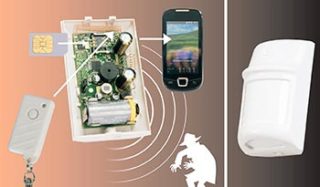
The sensor works in conjunction with other modules that are triggered by its signal. The security system devices are controlled by the controller, which is installed in the circuit during installation.
Security devices perform actions on the signal of the presence detector:
- give an alarm signal to the security console;
- send notifications of border violations to the owner of the premises, territory;
- turn on and off lighting, control other devices;
- change the functionality of climate modules, equipment.
Smart switches, sirens, meters, monitors start working when the virtual presence sensor detects movement. Manufacturers give access to an account on a web portal, where the user uses a mobile app to customize the interaction and set parameters.
Varieties of presence sensors
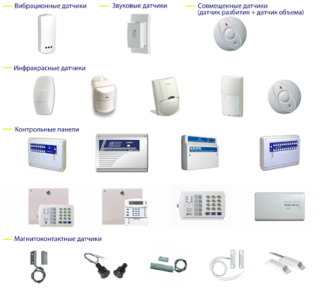
Optical varieties function on the principle of blocking the light beam with an opaque object and determine the size of the body. These include laser rangefinders. Ultrasonic types locate the space with ultrasound and find the distance to a moving object.
Microwave sensors use the principle of microwave waves to pass through objects or be reflected from certain surfaces. Used in systems that control the area behind a beam-permeable wall.
Magnetically sensitive devices are installed as non-contact switches. They include a Hall sensor and an electromechanical switch, they are mounted in the scheme of opening windows and doors. Pyrometry devices use the level of infrared rays and work to detect movement.
To turn on the light
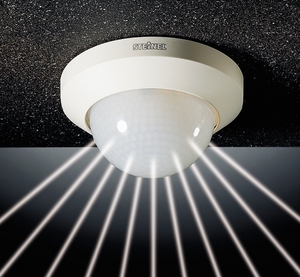
Motor detectors start lighting only when people are activated, for example, if a person walks in the field of view. A more sensitive presence sensor for turning on the light differs in that it reacts to small movements.It registers the movement of the hands, fingers, head tilt. The device will turn off the lighting if a person will sit still for a specified time.
The devices turn on the light if people move in the dark, but do not work during the day, when everything is visible. At night, the sensors ensure that the lamps work before the last person leaves the coverage area.
IR sensors
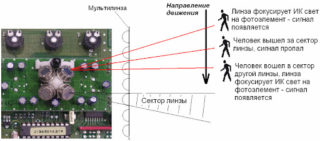
Devices study the change in infrared rays reflected from surrounding objects. Passive sensors only perceive heat waves, while active species themselves emit vibrations and wait for a return return for analysis.
Heat rays represent spectral radiation that is indistinguishable to the eye, but is detected by the photoelectric detectors of the sensor. The body of a person or animal does not glow in the visible range, but in the infrared spectrum it shines. Presence devices react to the onset or disappearance of radiation. The sensitivity of the modules is adjusted so that they react only to large objects and do not notice birds and small animals.
Sensors for the presence of a person in the room

The operating parameters are set so that the control level is higher than the acoustic, infrared and thermal noise levels.
Sensors are:
- single-position, when emission, signal reception and analysis occurs in one device;
- two-position, if one block emits waves, and the other receives and studies;
- multi-position with a large number of nodes for a more accurate response.
The tracking module gives a signal to send a notification to the owner of the intrusion. The alarm is sent as a message to the phone in the selected form. You can set several numbers for notification.
Areas of use
In rooms with tracking detectors, energy is saved by 40% and costs are reduced by 50-60%. The device turns on the air conditioner when there are people, and also coordinates the lighting and stops it when a person is absent.
The devices are mounted in the form of local elements, window opening coordinators, and are used in the “smart home” system. Designer models are installed in the private sector, street appliances regulate the light in entrances and courtyards. Presence detectors monitor the situation in warehouses, production halls and offices. The devices provide security in individual rooms or throughout the building.
Difference from motion sensor
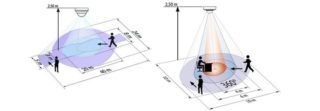
The work is based on the same mechanisms. The motion detector has dozens of microlenses, the space is divided into the same number of parts for investigation. The presence detector contains hundreds of these reflectors that coordinate minimal areas and track small-amplitude movements.
Devices for determining the presence of a person are configured much more painstakingly. Due to their high sensitivity, they often give a false alarm. An electronic embedded processor is used to mitigate such incidents, without the need for manual adjustments.
Presence sensor selection rules

The choice is influenced by the installation location, available power options, the amount of coordinated space. For indoor installation, select a device with appropriate characteristics, for example, without temperature fluctuations, dust and humidity. Outdoor devices have enhanced weather protection and increased coverage.
The selection takes into account the characteristics:
- type of device;
- working power;
- power supply from the mains or batteries;
- coverage angle and tracking range.
Pay attention to the additional functions of the model. Provides protection against false alarms when small warm-blooded objects appear, a delay in turning on the light when driving and protection from turning on lamps during the day.
Presence detector installation
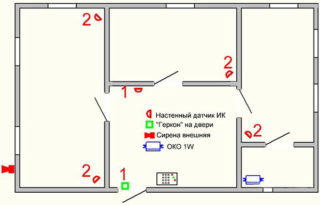
The device is placed so that direct light rays do not fall on it, and there are no objects nearby that block the view. Glass partitions on the path of waves are undesirable, because IR rays do not pass through the material. The corners of the room must fall within the coverage radius, otherwise several devices are installed, and this results in an overlap of attention zones.
Tracking detectors should not be installed near heating radiators, air conditioners and paddle fans. On the street, the devices are mounted under a canopy, taking into account the recommended installation height, which is given in the passport.
DIY making
A hand-made assembly provides an alternative to a factory device if the parameters are not suitable. The design uses inexpensive elements, and for increased load, 2 relays are installed.
Parts needed:
- Power Supply;
- pnp junction transistor;
- resistor;
- relay;
- photocell.
A low voltage (5 - 12 V) unit is used according to the load, eg the number of lamps. A current-limiting resistance is connected to the anode of the photocell, and the positive pole of the supply is soldered to the cathode. One output of the resistor is connected to minus, and the other is connected to the limiting resistance.
Scheme
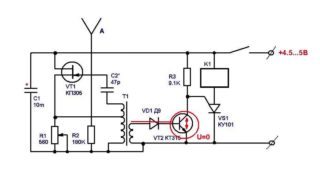
In the middle of the detector, photocells are placed to receive waves. The elements are covered with a common lens, which contains many small lenses for concentrating infrared rays before being fed to the reflectors. When moving, the focus shifts from the element and disappears on one glass, but is shown on the other. The sensor is triggered after several similar disappearances and appearances.
The device contains a wave generator, an amplifier and a compressor. After the return reception, the frequency shift is measured, and the speed of movement is found. A capacitor in the circuit equalizes the frequency with the resonant value of the antenna. The sensor is assembled on a board made of fiberglass material and covered by a housing, the antenna is exposed to the outside.



